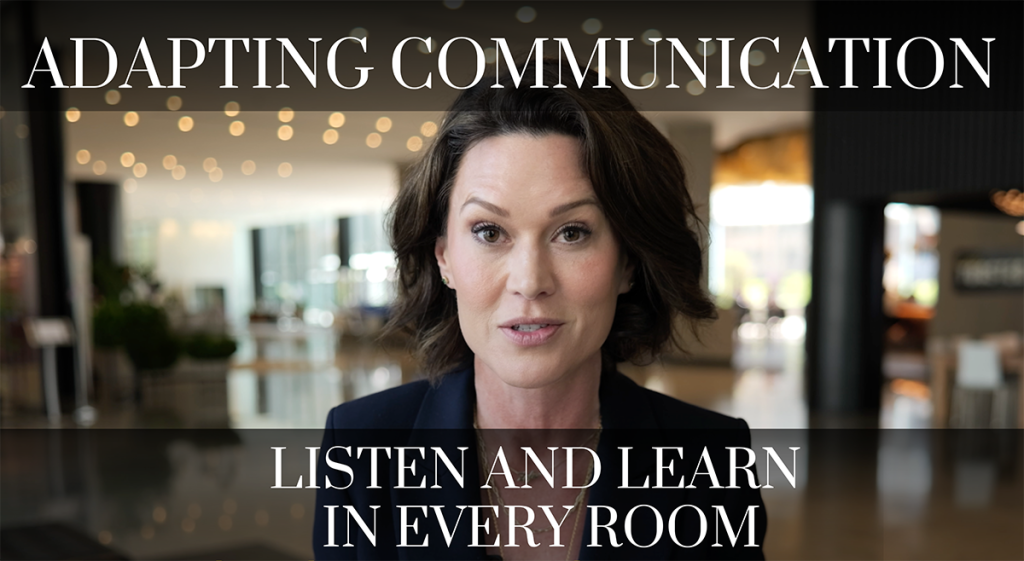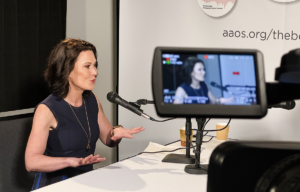Master the art of reading the room and adjusting your communication style to inspire, engage, and lead with impact
As executive leaders, we communicate with teams, clients, partners, and sometimes even with ourselves, often shaping our leadership presence based on the environment we’re in.
How do we adapt to the ever-changing dynamics around us?
From my life experiences, I’ve learned a valuable lesson: the importance of watching and learning from the room you’re in and adapting your communications to reach the people inside that room.
When I was young, my family moved around a lot for my dad’s job. Boston, New Hampshire, Southern California, Salt Lake City, and back to the Chicago area. Every time we relocated, I was faced with the challenge of figuring out how to communicate in a new setting. How could I get along with new classmates, make new friends, and adapt to each school’s unique culture? Each region had different rules, and I had to constantly adjust my communication style to fit in and thrive.
For my own career, I worked and went to college in Milwaukee, then moved to Champaign, then Lincoln, Memphis, Detroit, Minneapolis and then back to Chicago to work at WGN TV, WBBM Radio, and NBC Chicago.
This experience taught me the power of adaptability, especially when it comes to communication.
Leadership isn’t just about talking; it’s about understanding the environment, listening to your team, and adjusting your approach to achieve the desired outcome. The world is constantly changing, and as leaders, we need to ensure our communication evolves just as quickly.
The Importance of Listening
One of the most significant skills in adapting your communication is listening. It’s not just about hearing words but understanding the message behind them.
Whether in a team meeting, client discussion, or networking event, it’s crucial to listen actively. Understand the nuances of what’s being said, pick up on body language, and be aware of the overall tone in the room. These elements help you communicate more effectively by tailoring your approach to what’s actually needed in that moment.
In my own journey, moving from place to place, I learned quickly that communication styles weren’t universal. What worked in one environment didn’t always work in another. Understanding these differences helped me connect with others on a deeper level, and it’s the same in any leadership situation today.
Adapting Based on the Room
As a leader, how do you communicate in different settings? Do you adjust your tone and approach based on your audience or the atmosphere of the meeting?
I think back to my years of moving from school to school, learning how to adapt to the various social structures and dynamics in each place. Similarly, in the business world, each meeting or negotiation can require a slightly different communication style.
At Janicek Performance Group, we coach executives to understand their audience and adjust their communication approach with different stakeholders. What works when addressing a team may differ from how you communicate with board members or investors.
This adaptability is key to ensuring your message resonates and engages your audience, no matter who they are.
How Can You Begin to Adapt Your Communication Today?
- Observe the Room: Take a moment to observe the dynamics in each room you enter. How is the energy? What’s the mood? What are people’s body language and facial expressions saying?
- Listen More Than You Speak: As leaders, we often feel compelled to speak and lead the conversation. But some of the best insights come from simply listening — understanding what others are saying and how they’re saying it.
- Adjust Your Approach: Whether you’re in a formal boardroom or an informal brainstorming session, be ready to adjust your tone, pace, and language to better fit the environment. What might seem appropriate in one setting could come across as disconnected in another.
- Learn from Every Interaction: Every room is an opportunity to learn something new. Even if things don’t go as planned, there’s always something valuable to take away. Use those moments to refine your communication style.
In leadership, there’s no one-size-fits-all communication strategy. Just like I had to adapt to new environments as a child, we must continuously learn from the different settings we find ourselves in. By paying attention to our surroundings, listening more intently, and adjusting our approach, we can strengthen our ability to lead with influence and impact.
So, as you move through your day, ask yourself: How am I communicating in this room? Am I adapting to the situation, or am I defaulting to my usual style?
The key to effective leadership is not just about speaking clearly, it’s about understanding the context, listening to your team, and communicating in a way that builds trust and fosters growth. At JPG, we can help you learn and become a better leader — and listener.





